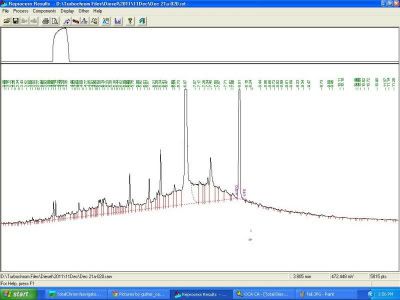Hi all. I've asked a bit about this before, but now think I may have an answer, and am looking for some advice. I run Diesel Range Organics on an HP6890 GC/FID, and constantly have surrogate recovery issues. A lot of "ND" samples have very high surrogates. Well, I am pretty convinces that this is because our reporting limit is artificially high, so the samples actually are giving a baseline contribution, especially those with some heavier hydrocarbons. Here are a method blank, and a sample below the RL that had a ~200% surrogate recovery:


We calibrate the instrument down to 10ppm, but our reporting limit is 250ppm. So what I was thinking of doing was extracting from a smaller amount of sample. Thoughts?
edit: I swear both of those images are 400x300


